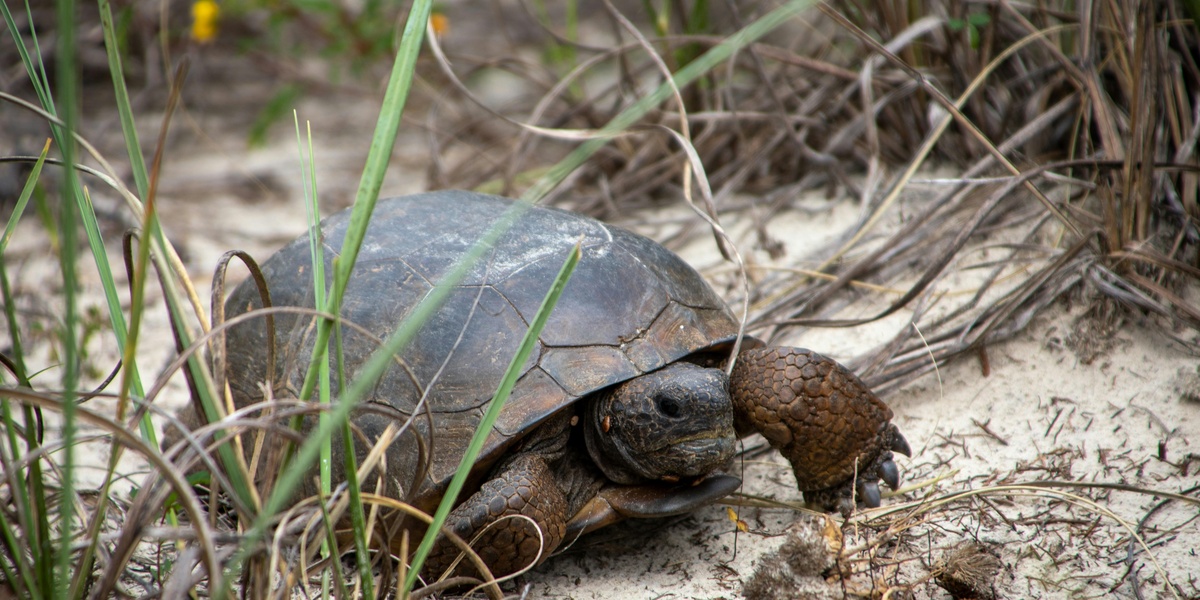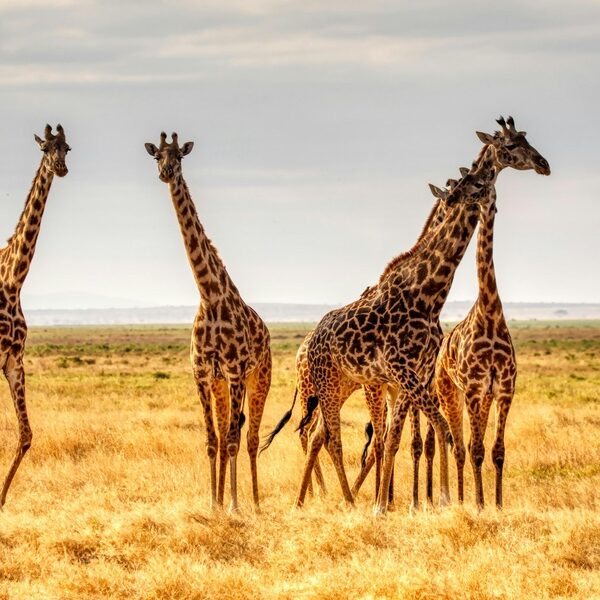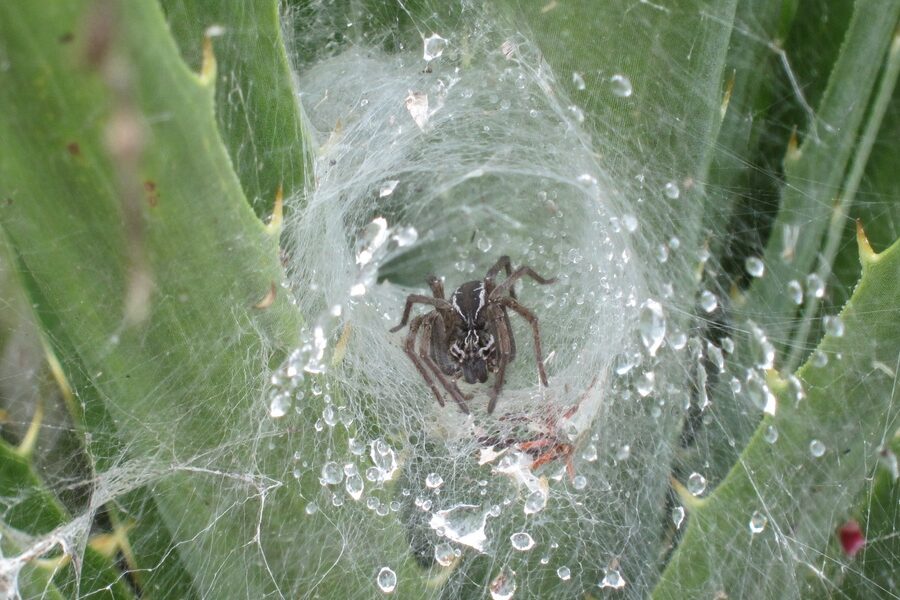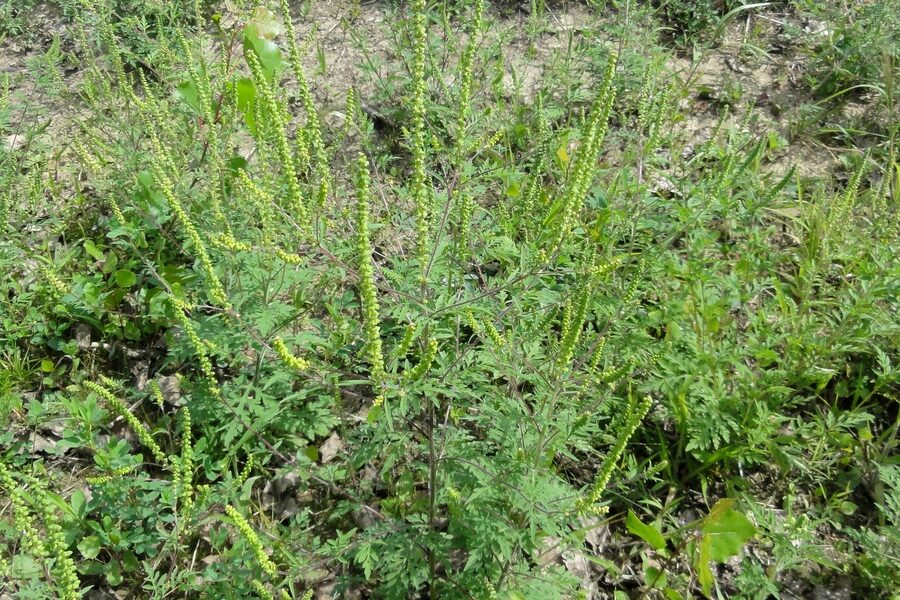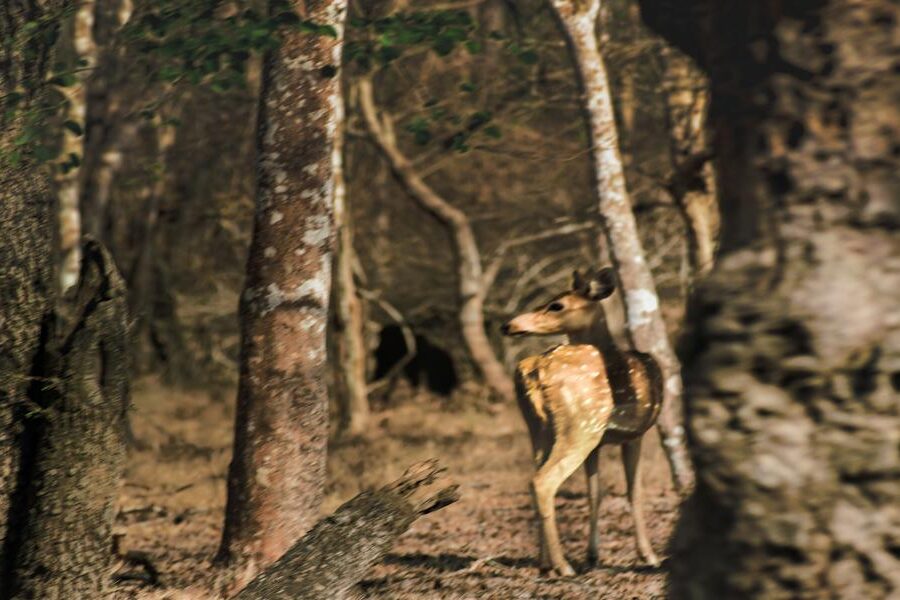This list covers 62 animals that live in pine savannas, mainly the longleaf pine ecosystems of the southeastern United States. Many of these animals depend on open, sandy soils and regular fire to keep the ground layer healthy; several are rare or threatened, such as the Red-cockaded Woodpecker and the Reticulated Flatwoods Salamander. The subject is ecology and wildlife of North American pine savannas. For official species and recovery information, consult the U.S. Fish & Wildlife Service (https://www.fws.gov).
Each table entry shows the common name and scientific name, the species’ range or habitat, and a short note on why the animal is notable or its conservation status. Use the table below to find species names, where they live, and why they matter.
Which pine savanna animals indicate a healthy longleaf ecosystem?
Look for species that need open pines, a rich herb layer, and frequent fire. Key indicators include the Red-cockaded Woodpecker, Bachman’s Sparrow, gopher tortoise, and many flatwoods salamanders. These animals need mature pines, sandy soils, or isolated ponds. Their presence shows the habitat still has the structure and fire regime that many pine-savanna plants and animals need.
How does fire management affect pine savanna animals?
Prescribed fire keeps the understory open, helps native grasses and wildflowers, and creates the bare ground and sunny gaps many animals need. Fire makes foraging sites, nesting spots, and breeding pools. Fire suppression closes the canopy and lets shrubs take over. That change removes habitat for ground-nesting birds, burrow users, and many reptiles and amphibians. Manage fire regularly and seasonally to keep pine savanna animals thriving.
Pine Savanna Animals
| Name | Scientific name | Range / habitat | Notable |
|---|---|---|---|
| Red-cockaded Woodpecker | Dryobates borealis | Longleaf pine savannas, SE United States | Endangered longleaf-pine cavity nester |
| Bachman’s Sparrow | Peucaea aestivalis | Open pine savannas, SE coastal plain | Indicator of healthy groundcover and fire |
| Brown-headed Nuthatch | Sitta pusilla | Pine forests, SE U.S.; often longleaf pine | Small, social bark-forager |
| Pine Warbler | Setophaga pinus | Pine forests across eastern U.S., favors pines | Pine specialist songbird, often forages in canopy |
| Northern Bobwhite | Colinus virginianus | Open pine-grassland edges, SE U.S. | Declining quail species, hunted historically |
| Red-headed Woodpecker | Melanerpes erythrocephalus | Open woodlands, savannas, scattered trees | Bold, colorful cavity nester and seed hoarder |
| Eastern Bluebird | Sialia sialis | Open pine savannas, woodland edges, fields | Cavity nester, welcome backyard species |
| Eastern Towhee | Pipilo erythrophthalmus | Shrubby edges, pine savannas with understory | Ground-foraging sparrow with strong song |
| Chuck-will’s-widow | Antrostomus carolinensis | Open pine woods and scrubby areas, nocturnal | Nocturnal insectivore, camouflaged roosts |
| Swallow-tailed Kite | Elanoides forficatus | Wooded wetlands and pine savannas, SE U.S. | Acrobatic raptor, migratory long-distance traveler |
| Mississippi Kite | Ictinia mississippiensis | Open pine landscapes, floodplain edges | Graceful hunter of flying insects |
| American Kestrel | Falco sparverius | Open savannas, edges, perches on poles | Small falcon, agile aerial hunter |
| Common Ground-Dove | Columbina passerina | Open, sandy pine savannas and scrub | Tiny dove, ground feeder of seeds |
| Wild Turkey | Meleagris gallopavo | Mixed pine-hardwood savannas and woodlands | Large ground bird, social flocks and gobbling |
| Yellow-throated Warbler | Setophaga dominica | Pine and riverine forests, SE U.S. | Vivid throat patch, bark-gleaning habits |
| Red-bellied Woodpecker | Melanerpes carolinus | Wooded pine savannas, urban edges | Adaptable forager, stores food in bark crevices |
| Northern Flicker | Colaptes auratus | Open pine forests, edges, ground foraging areas | Ground-foraging woodpecker that eats ants |
| Henslow’s Sparrow | Centronyx henslowii | Sparse grassy openings in pine savannas | Grassland specialist, declining habitat needs |
| Gopher Tortoise | Gopherus polyphemus | Dry sandy longleaf pine uplands, burrows | Keystone species; burrows shelter many species |
| Eastern Indigo Snake | Drymarchon couperi | Longleaf pine savannas and dry uplands | Large nonvenomous predator, federally threatened |
| Florida Pine Snake | Pituophis melanoleucus mugitus | Sandy pine uplands, SE coastal plain | Large constrictor, elusive and secretive |
| Southern Hognose Snake | Heterodon simus | Sandy longleaf pine habitats, open scrub | Upturned snout, bluffing defense displays |
| Coachwhip | Masticophis flagellum | Open pine savannas, sandy roadsides | Fast, active hunter, diurnal racer |
| Eastern Diamondback Rattlesnake | Crotalus adamanteus | Dry pine flatwoods and sandhills | Large venomous rattlesnake, apex predator |
| Pygmy Rattlesnake | Sistrurus miliarius | Pine flatwoods, wet savannas and edges | Small venomous rattler, cryptic and secretive |
| Scarlet Snake | Cemophora coccinea | Sandy pine uplands and scrub habitats | Mimics coral snake colors, eats reptile eggs |
| Eastern Glass Lizard | Ophisaurus ventralis | Open pine woods, sandy soils with groundcover | Legless lizard, brittle tail autotomy |
| Six-lined Racerunner | Aspidoscelis sexlineata | Open sunny gaps in pine savannas | Fast ground-dweller, active during day |
| Eastern Fence Lizard | Sceloporus undulatus | Open pine ridges, log piles, fences | Common basker, territorial males |
| Eastern Box Turtle | Terrapene carolina | Moist pockets in pine savannas and woodlands | Terrestrial, long-lived, utilizes understory |
| Striped Mud Turtle | Kinosternon baurii | Seasonal ponds, ditches within pine savannas | Small aquatic turtle of temporary wetlands |
| Eastern Chicken Turtle | Deirochelys reticularia | Pine flatwoods ponds, slow-moving wetlands | Long-necked aquatic turtle, seasonal feeder |
| Gopher Frog | Lithobates capito | Sandy pine uplands, breed in seasonal ponds | Burrow-dependent frog, explosive breeders |
| Frosted Flatwoods Salamander | Ambystoma cingulatum | Pine flatwoods with ephemeral ponds | Burrow-using salamander, threatened by wetland loss |
| Reticulated Flatwoods Salamander | Ambystoma bishopi | Longleaf pine flatwoods with seasonal wetlands | Endangered, relies on isolated ephemeral ponds |
| Striped Newt | Notophthalmus perstriatus | Pine flatwoods, isolated ponds and ditches | Terrestrial eft stage, local endemic |
| Dwarf Salamander | Eurycea quadridigitata | Wet pine savannas, seepage areas and ditches | Tiny, secretive salamander in wet groundcover |
| Pine Woods Treefrog | Dryophytes femoralis | Pine flatwoods and coastal pine savannas | Warm-toned treefrog, common in pines |
| Barking Treefrog | Dryophytes gratiosus | Pine savannas, flooded fields, roadside ditches | Loud, barking call heard at night |
| Squirrel Treefrog | Dryophytes squirellus | Pine savannas with shrubs and ponds | Tiny, arboreal frog, often bright green |
| Little Grass Frog | Pseudacris ocularis | Sodden grassy openings in pine savannas | One of North America’s smallest frogs |
| Ornate Chorus Frog | Pseudacris ornata | Pine flatwoods ponds, wet depressions | Brown patterned singer in seasonal pools |
| Eastern Spadefoot | Scaphiopus holbrookii | Sandy, well-drained pine uplands and savannas | Explosive breeder after heavy rains, fossorial |
| Oak Toad | Anaxyrus quercicus | Open pine savannas with sandy soil | Tiny toad, prefers xeric longleaf habitats |
| Fox Squirrel | Sciurus niger | Open pine savannas, mature pines with mast | Large tree squirrel, powerful climber and seed-eater |
| Florida Mouse | Podomys floridanus | Longleaf pine uplands with wiregrass | Endemic rodent, burrow and clump specialist |
| Eastern Cottontail | Sylvilagus floridanus | Edge habitats and openings in pine savannas | Common rabbit, prolific breeder |
| White-tailed Deer | Odocoileus virginianus | Broadly in pine savannas and woodlands | Common ungulate, impacts vegetation structure |
| Bobcat | Lynx rufus | Pine savannas, mixed woodland patches | Secretive predator, solitary and crepuscular |
| Gray Fox | Urocyon cinereoargenteus | Wooded savannas and mixed pine-hardwood edges | Tree-climbing canid, omnivorous diet |
| Nine-banded Armadillo | Dasypus novemcinctus | Open pine savannas and disturbed areas | Digging generalist, expanding range northward |
| Southeastern Myotis | Myotis austroriparius | Cavernous trees, bottomland pockets in pine savannas | Roosts in tree cavities, insectivorous |
| Eastern Lubber Grasshopper | Romalea microptera | Open pine savannas and grassy patches | Large, slow grasshopper, striking coloration |
| Georgia Satyr | Neonympha areolata | Shaded pine savanna seeps and wet edges | Rare butterfly linked to seep habitats |
| Arogos Skipper | Atrytonopsis arogos | Open sandy glades and pine-savanna openings | Skipper butterfly of open habitats, nectar feeder |
| Palamedes Swallowtail | Papilio palamedes | Pine flatwoods and swamp edges with laurels | Large swallowtail, larvae eat laurel family plants |
| Yucca Giant-Skipper | Megathymus yuccae | Sandy pine barrens with yucca stands | Larvae in yucca roots, unique life cycle |
| Southern Pine Beetle | Dendroctonus frontalis | Pine stands, outbreaks in stressed forests | Major pest of pine, causes stand mortality |
| Banded Pygmy Sunfish | Elassoma zonatum | Shallow bogs and swampy ponds in pine savannas | Tiny colorful fish of acidic wetlands |
| Bluespotted Sunfish | Enneacanthus gloriosus | Shallow ponds and wetlands in pine flatwoods | Small, ornate sunfish in vegetated waters |
| Swamp Darter | Etheostoma fusiforme | Shallow marshes and slow streams in pine wetlands | Small darter, prefers vegetated slow waters |
| Lined Topminnow | Fundulus lineolatus | Shallow, vegetated ditches and ponds in pine savannas | Surface-dwelling, tolerant of variable waters |
Images and Descriptions
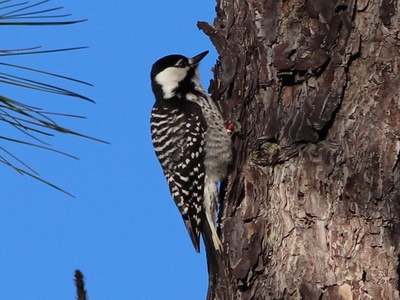
Red-cockaded Woodpecker
Small black-and-white woodpecker that excavates cavities in living pines over years. Lives in family groups, requires mature longleaf stands and frequent fire. Populations declined sharply; recovery focuses on habitat restoration and prescribed burning.

Bachman’s Sparrow
Cryptic, streaked sparrow that prefers sparse groundcover beneath pines. Sings a thin rising whistle from low perches. Populations decline with fire suppression and pine plantation conversion; benefits from restored longleaf ecosystems.
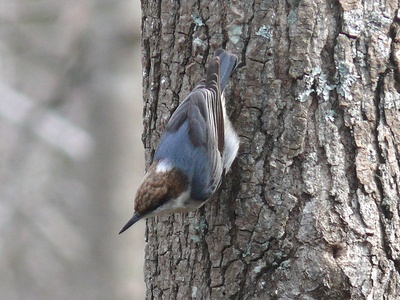
Brown-headed Nuthatch
Tiny, gray bird with a brown cap that probes bark for insects and stores seeds. Often forms cooperative family groups. Reliant on mature pines and snags for nesting; a charismatic pine savanna resident.
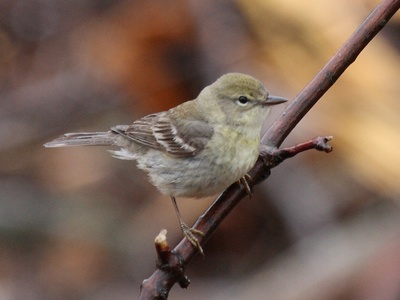
Pine Warbler
Olive-green warbler often seen flitting through pine branches eating insects and seeds. Nests in pines and is more common in mature pine stands. Vocal song and year-round presence in southern ranges make it familiar.
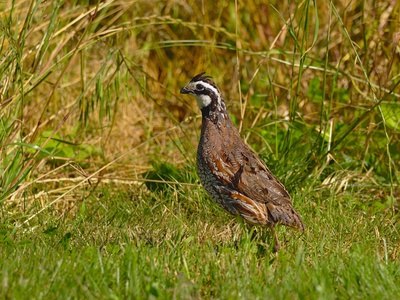
Northern Bobwhite
Small, ground-dwelling quail that forms coveys and utters distinctive “bob-white” calls. Needs mixed grass and shrub structure for nesting and brood-rearing. Populations have fallen due to habitat loss and fire suppression.
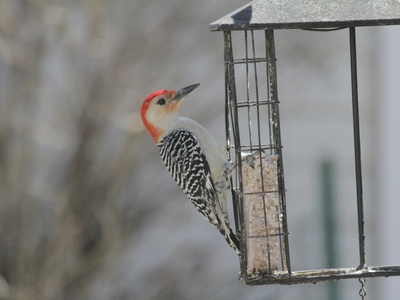
Red-headed Woodpecker
Striking black, white and red woodpecker that catches insects and stores nuts. Uses cavities for nesting and roosting. Declines in some areas linked to fewer dead trees and habitat fragmentation.
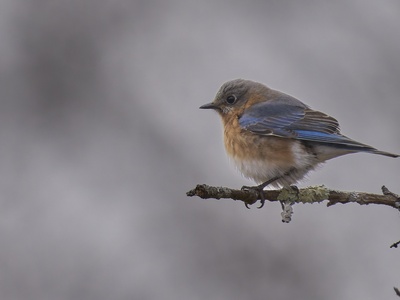
Eastern Bluebird
Small, robin-sized thrush with blue upperparts and warm orange breast. Feeds on insects and berries and readily uses nest boxes. Populations recoverable with nest boxes and restored openings.
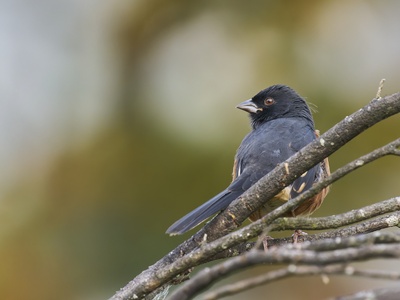
Eastern Towhee
Large sparrow with rufous flanks and bold song. Forages on leaf litter for seeds and insects, often flicking leaves. Prefers shrub-layer habitat created by fire or disturbance.
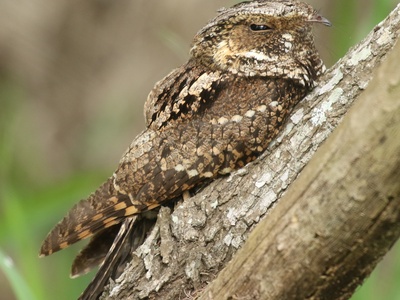
Chuck-will’s-widow
Large nightjar that ambushes moths and bats from low perches at dusk. Cryptically patterned and rarely seen by day. Relies on open, lightly wooded landscapes for feeding and roosting.
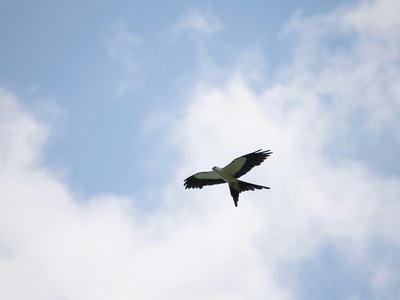
Swallow-tailed Kite
Elegant black-and-white raptor with forked tail that soars over pine savannas catching insects and small vertebrates. Breeds in mature forest patches and migrates to South America outside breeding season.
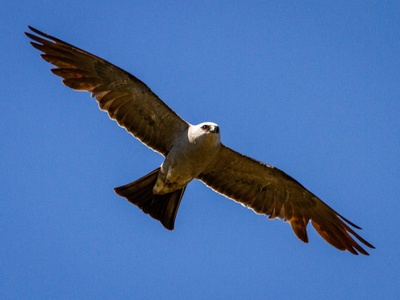
Mississippi Kite
Small raptor often seen quartering over open savannas and fields, snatching insects and small birds. Nests in loose colonies in tall trees, increasingly common in suitable pine habitats.
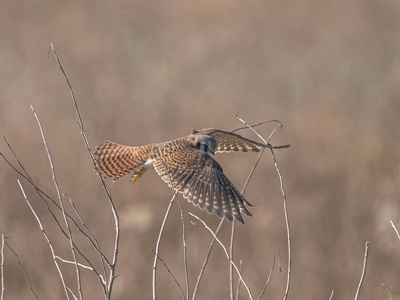
American Kestrel
Colorful small falcon that hovers briefly before diving on insects and small rodents. Uses snags, posts, and cavities for nesting. Common in open pine landscapes with perching opportunities.
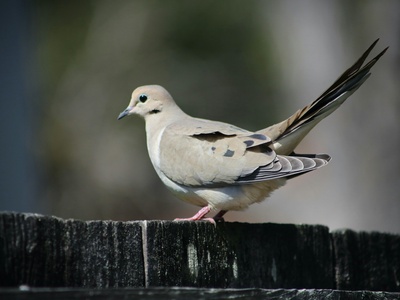
Common Ground-Dove
Small, ground-foraging dove with long tail and gentle coo. Prefers open sandy soils with sparse vegetation and low shrubs. Often seen in clearings and fire-maintained pine understories.
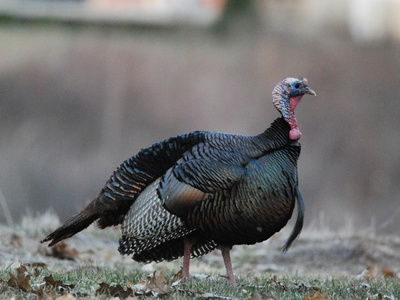
Wild Turkey
Big, ground-dwelling bird that forages in pine savannas for seeds, insects, and mast. Males display with fan tails. Thrives where fire maintains open understory and mast-producing oaks.
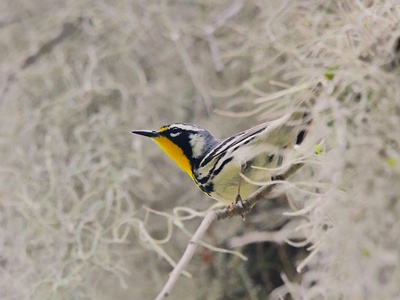
Yellow-throated Warbler
Slim warbler with bright yellow throat that gleans insects from tree trunks and branches. Often along pine stands near water. Distinctive song and striking plumage make it noticeable in the canopy.
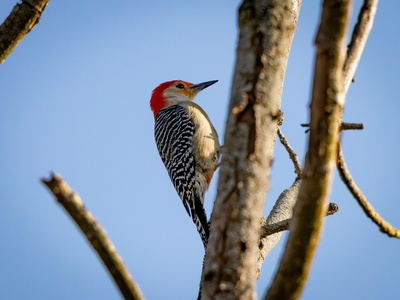
Red-bellied Woodpecker
Medium woodpecker with barred back and pale red belly. Drills for insects, eats fruit and nuts, and caches food. Common where mature trees and snags are available.
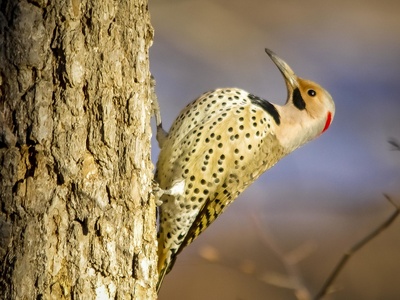
Northern Flicker
Large, brown woodpecker with spotted belly and bright underwings. Often feeds on the ground for ants and beetles. Nests in cavities and benefits from open pine understories.
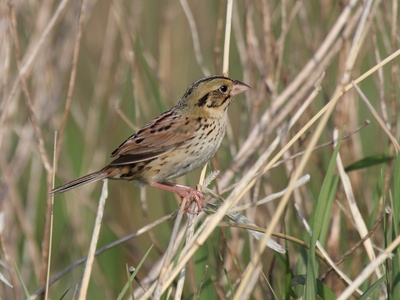
Henslow’s Sparrow
Small, streaky sparrow with a flat-headed profile that sings quietly from low perches. Requires herbaceous groundcover and frequent burning or grazing to maintain habitat; often rare and local.
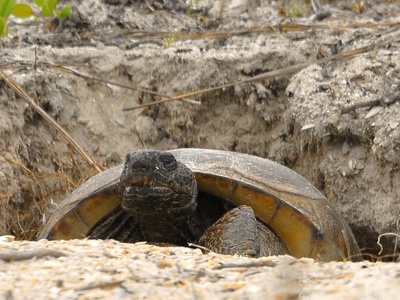
Gopher Tortoise
Large, terrestrial tortoise that digs deep burrows in sandy soils. Burrows provide refuge for dozens of other species. Threatened by habitat loss and fragmentation across the Southeast.
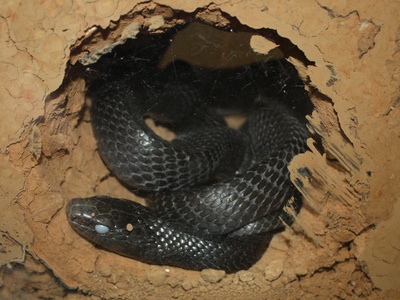
Eastern Indigo Snake
Impressive glossy black snake that can exceed two meters. Hunts turtles, rodents, and other snakes in open pine habitats and uses gopher tortoise burrows seasonally. Conservation tied to tortoise and pine restoration.
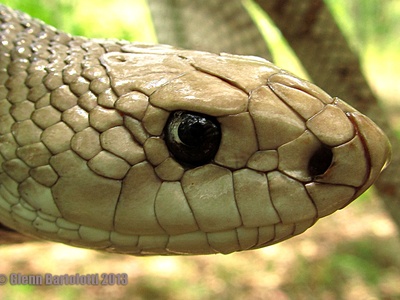
Florida Pine Snake
Heavy-bodied snake that burrows and consumes small mammals and birds. Prefers well-drained sandy soils with open pine canopy. Populations vulnerable to habitat conversion and fragmentation.
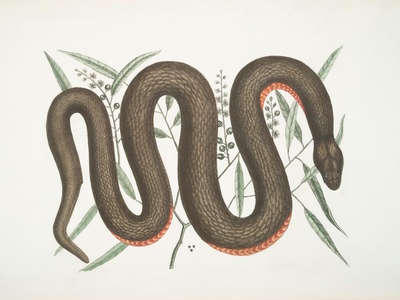
Southern Hognose Snake
Small to medium snake known for dramatic bluffing, neck-flattening, and feigning death when threatened. Feeds on amphibians and reptiles; depends on sandy soils and open understory.
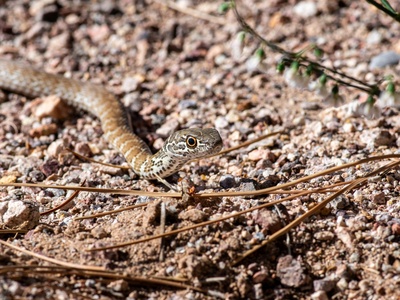
Coachwhip
Long, slender snake with whip-like tail that actively hunts lizards, birds, and small mammals during the day. Prefers open ground and sparse vegetation where it can chase prey.
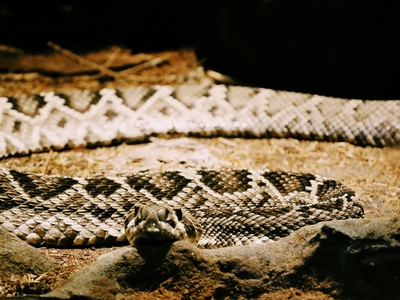
Eastern Diamondback Rattlesnake
The largest rattlesnake in North America, powerful and heavy-bodied. Ambushes prey in open pine habitats and requires large home ranges. Encounters are rare but potentially dangerous.
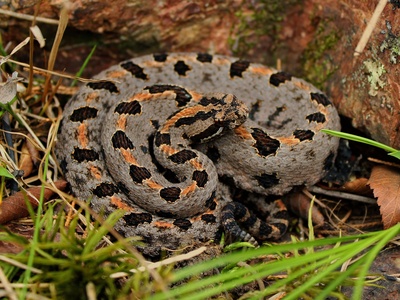
Pygmy Rattlesnake
Small, stout rattlesnake often found in leaf litter and low vegetation. Feeds on frogs and small mammals. Typically shy; bites are medically significant but bites are uncommon with awareness.
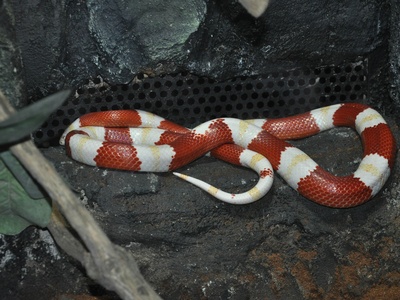
Scarlet Snake
Smooth-bodied snake with red, black and white bands; often feeds on reptile eggs and small lizards. Nonvenomous and secretive, preferring loose, sandy soils in open pines.
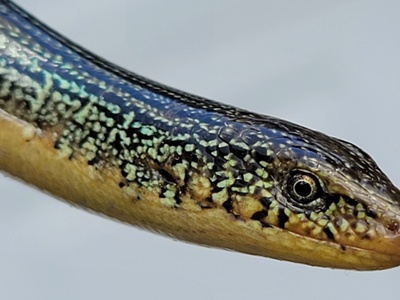
Eastern Glass Lizard
Long, limbless lizard resembling a snake but with eyelids and external ear openings. Eats insects and small vertebrates, sheds tail when threatened. Prefers open sunny sandy areas.
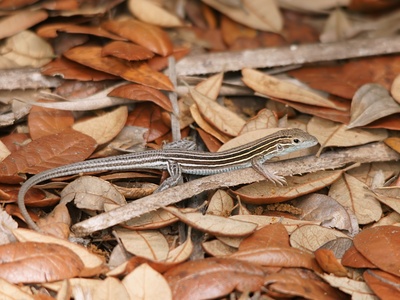
Six-lined Racerunner
Small, striped lizard that dashes across bare ground chasing insects. Requires open sunlit patches in pine habitats and retreats to vegetation when disturbed.
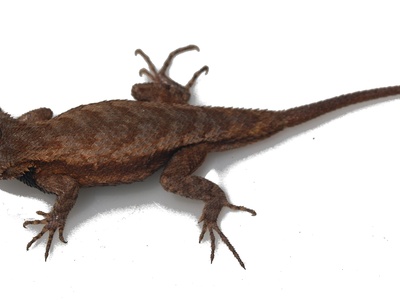
Eastern Fence Lizard
Spiny-scaled lizard that basks on logs and rocks, feeding on arthropods. Males display blue belly patches while defending territories. Thrives where structured ground cover and sunlit perches exist.
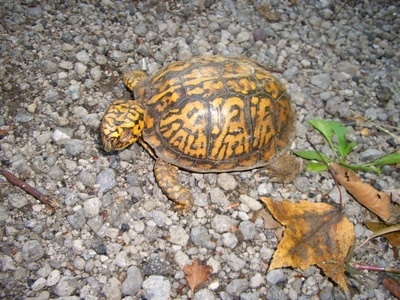
Eastern Box Turtle
Domed, terrestrial turtle that forages on invertebrates and fruit. Requires mixed wet and dry pockets within pine landscapes and is vulnerable to road mortality and habitat fragmentation.
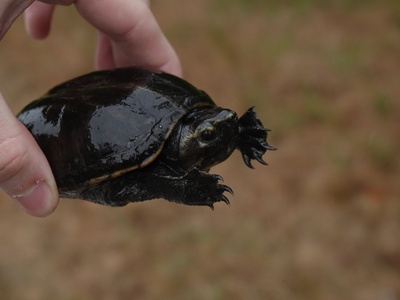
Striped Mud Turtle
Small, domed turtle with bright stripes that uses shallow, often temporary wetlands for feeding and nesting. Moves overland between ponds; sensitive to wetland loss and drainage.
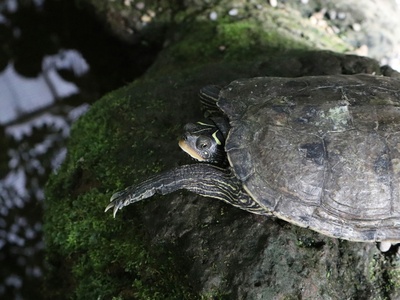
Eastern Chicken Turtle
Slim, long-necked turtle that forages in shallow ponds for invertebrates and amphibians. Uses terrestrial uplands for nesting; populations impacted by wetland alteration.
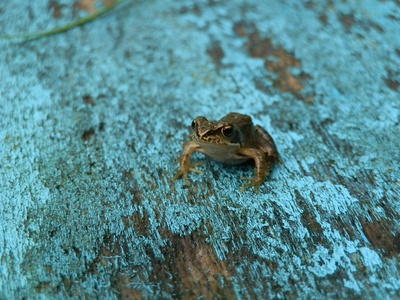
Gopher Frog
Medium-sized frog that spends much time in upland burrows, breeding explosively in isolated ponds after heavy rains. Faces declines where uplands and breeding wetlands are fragmented or altered.
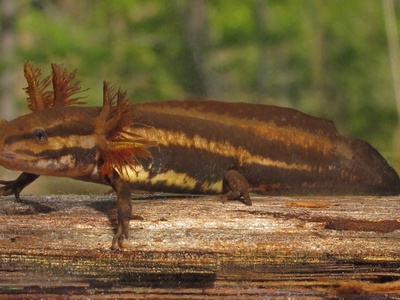
Frosted Flatwoods Salamander
Small mole salamander that lives in underground retreats and migrates to grassy seasonal ponds to breed. Populations are sensitive to altered hydrology, habitat fragmentation, and fire suppression.

Reticulated Flatwoods Salamander
Rare salamander of coastal longleaf savannas that breeds in shallow, grassy ponds. Heavily impacted by wetland drainage and pine plantation conversion; recovery tied to habitat restoration.
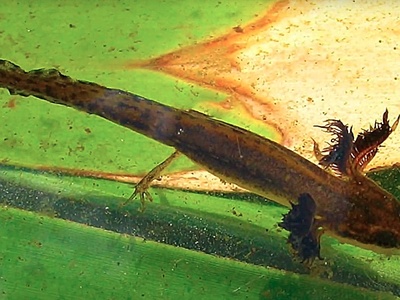
Striped Newt
Newt with terrestrial juvenile (eft) stage that requires both upland habitat and isolated breeding ponds. Unique life cycle and limited range make it conservation-dependent in pine-savanna landscapes.
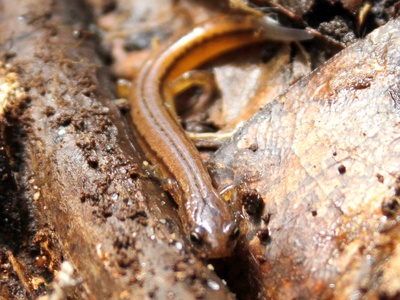
Dwarf Salamander
Small, slender salamander often found in wet leaf litter and grassy seepage areas. Limited dispersal and specific microhabitat needs make it sensitive to hydrological changes.
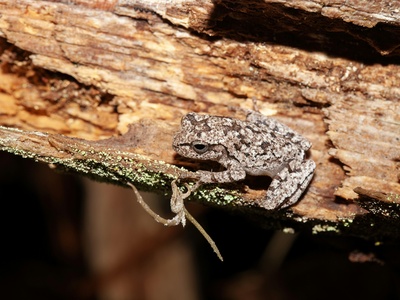
Pine Woods Treefrog
Small treefrog with reddish or tan coloration that calls from low vegetation and pines near temporary ponds. Active in warm months and reliant on water-filled depressions for breeding.
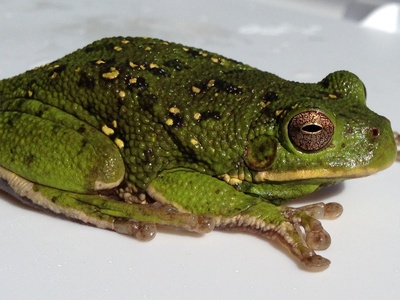
Barking Treefrog
Large treefrog with a loud, deep bark-like call that breeds in ephemeral wetlands after rains. Often found in open pine wetlands and benefits from maintained hydroperiods.
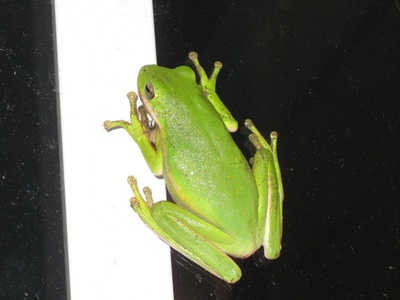
Squirrel Treefrog
Small, agile treefrog that clings to vegetation and breeds in temporary pools. Coloration can shift to match surroundings; common in well-maintained pine wetlands.
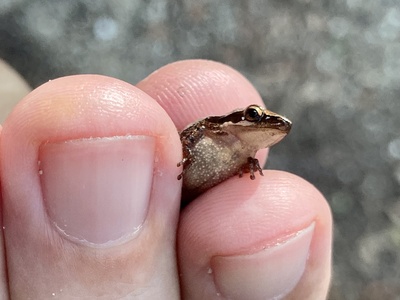
Little Grass Frog
Tiny chorus frog often heard as a high-pitched peep in grassy wetlands and roadside ditches. Prefers dense grassy vegetation near shallow water for breeding and protection.
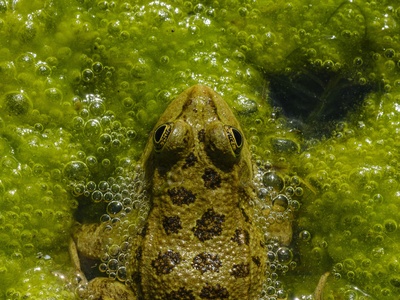
Ornate Chorus Frog
Small, patterned frog that calls from the edges of temporary ponds and ditches. Requires grassy vegetation for egg attachment and is most active during rainy seasons.
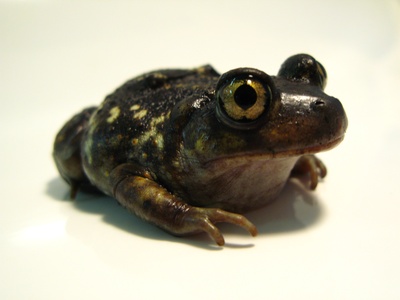
Eastern Spadefoot
Round-bodied toad with spade-like hind feet for burrowing. Emerges after heavy rains to breed in ephemeral pools; adults spend most time underground in sandy soils.
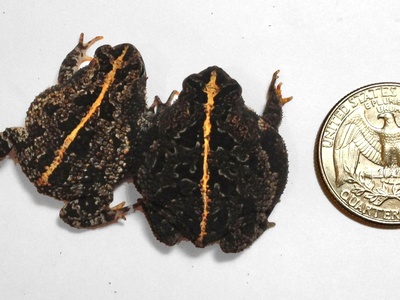
Oak Toad
Small, stocky toad with warty skin and short limbs that breeds in temporary pools. Often associated with open longleaf pine landscapes and sparse groundcover maintained by fire.
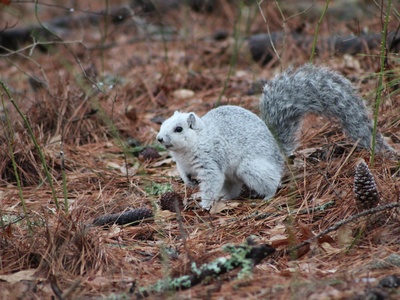
Fox Squirrel
Big tree squirrel that feeds on nuts, seeds and buds in pine-oak savannas. Requires mature trees for denning and benefits from mixed mast-producing species in the understory.
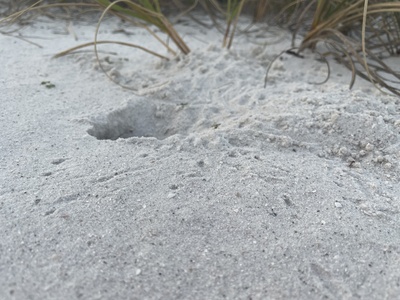
Florida Mouse
Small nocturnal mouse found in clumps of vegetation and gopher tortoise burrows. Endemic to Florida’s pine ecosystems and sensitive to habitat fragmentation and fire regime changes.
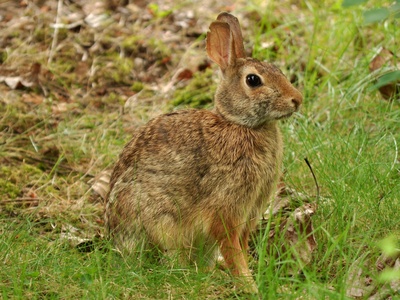
Eastern Cottontail
Medium-sized rabbit that favors brushy edges and open understory for cover and feeding. Produces multiple litters and is an important prey species for many predators in pine landscapes.
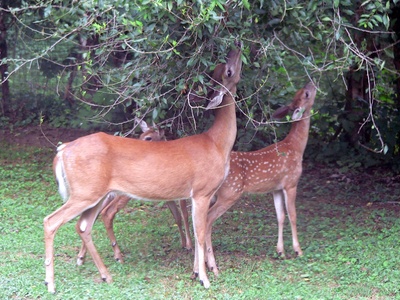
White-tailed Deer
Versatile deer that browses shrubs and seedlings in and around pine savannas. Populations influence understory composition; management balances hunting, habitat, and regeneration needs.
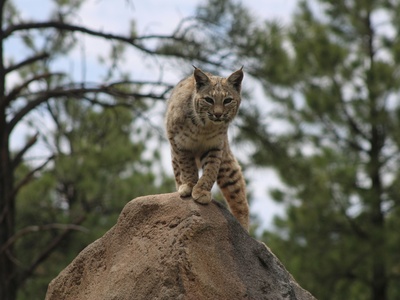
Bobcat
Medium-sized wild cat that hunts rabbits, rodents, and birds in open pine and edge habitats. Requires cover and prey; tolerant of some human disturbance but favors intact landscapes.
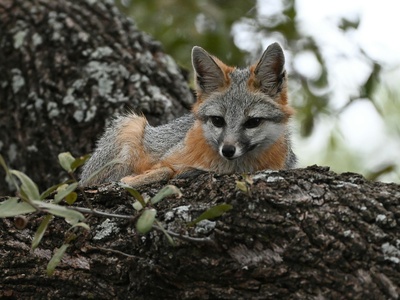
Gray Fox
Small canid that forages for rodents, fruits, and insects and can climb low branches. Prefers patchy, brushy understories and benefits from diverse pine savanna structure.
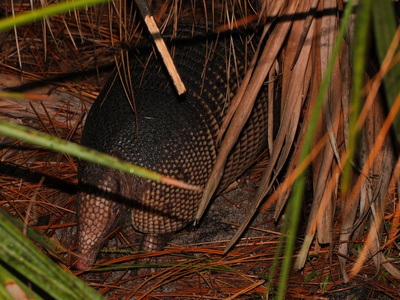
Nine-banded Armadillo
Small armored mammal that digs for insects and grubs in sandy soils. Creates burrows and foraging pits that affect soil and vegetation; increasingly common across southern pine landscapes.
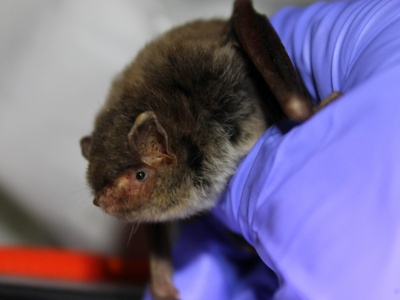
Southeastern Myotis
Medium bat that roosts in hollow trees and forages over wetlands and open areas at night. Sensitive to loss of large trees and forest structure in pine habitats.
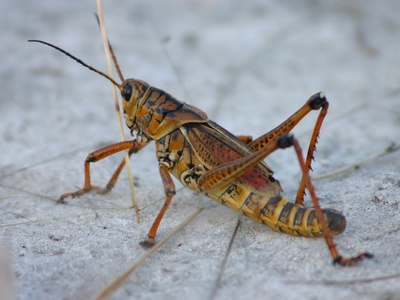
Eastern Lubber Grasshopper
Big, flight-limited grasshopper often brightly colored and common in grassy openings. Feeds on a variety of plants and can be locally abundant in open longleaf understories.
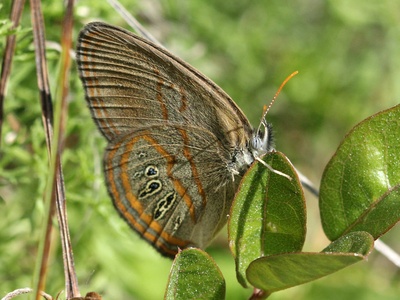
Georgia Satyr
Small, brown butterfly whose larvae rely on sedges in shaded seepage areas within pine systems. Localized and sensitive to hydrological changes and canopy closure.
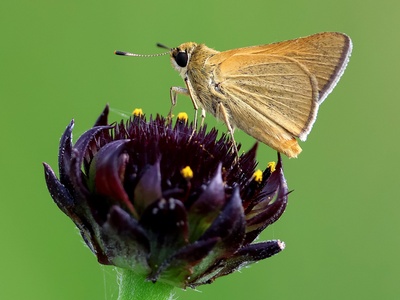
Arogos Skipper
Small brown skipper that frequents grassy openings and feeds on flower nectar. Larvae feed on native grasses; relies on open sunny habitats maintained by disturbance.
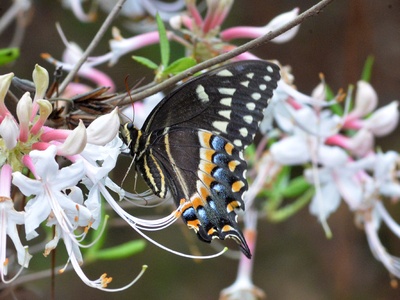
Palamedes Swallowtail
Bold black-and-yellow swallowtail often seen gliding near forest edges. Caterpillars feed on pondberry and other laurels in wet pine habitats; adults sip nectar.
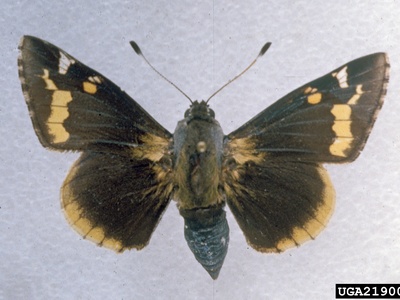
Yucca Giant-Skipper
Large, stout skipper whose caterpillars bore into yucca roots and stems. Occurs where yucca plants occur in open sandy pockets within pine landscapes and is locally specialized.
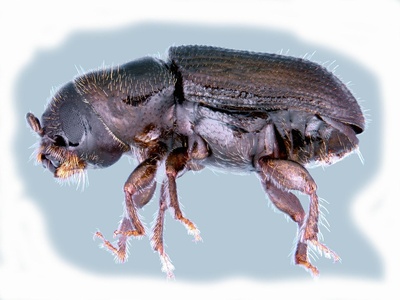
Southern Pine Beetle
Small bark beetle that can cause catastrophic pine mortality during outbreaks, especially in dense or stressed stands. Plays a role in natural disturbance but threatens commercial and conservation forest health.
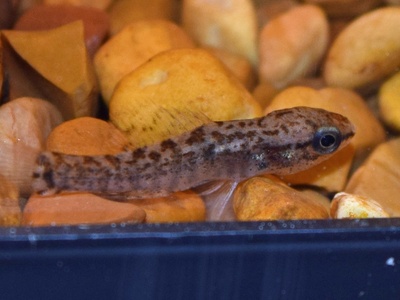
Banded Pygmy Sunfish
Very small freshwater fish that inhabits vegetated, tannin-stained ponds and backwaters. Feeds on tiny invertebrates and depends on intact, acidic wetland habitats within pine landscapes.
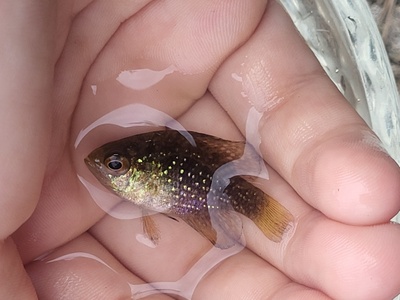
Bluespotted Sunfish
Small freshwater sunfish with blue spots that lives among aquatic vegetation. Found in slow, shallow waters of pine savannas and sensitive to wetland drainage and water quality change.
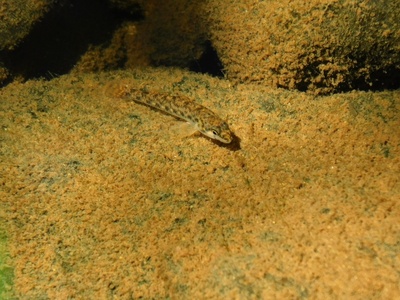
Swamp Darter
Slender fish that lives among aquatic plants in shallow wetlands and ditches. Feeds on tiny invertebrates; serves as indicator of healthy shallow-water habitats.

Lined Topminnow
Small topminnow that swims near the water surface in shallow, often tannin-stained ponds. Feeds on insects and larvae; found in ephemeral and permanent waters within pine ecosystems.
